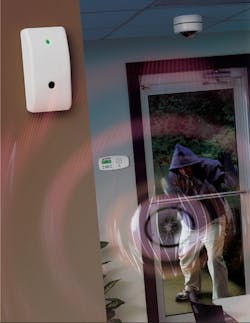Best Practices for Audio Alarm Verification
Audio verification has a long history reaching back more than 50 years — well before video verification technologies — and is responsible for far more than 200,000 arrests. The Partnership for Priority Verified Alarm Response (PPVAR) recently released its “Audio Verification Best Practices” that outline the best practices for Central Stations using audio to verify an intrusion alarm.
Joey Rao-Russell, President of California-based Kimberlite, led the effort as the Chair of the PPVAR Audio Verification Committee. She was helped by Robbie Robinson of the Phoenix Police Department, who provided broad-based input on audio alarm systems and how to minimize false alarms; and Joel Zimmerman of Sonitrol New England, who was a key resource on the alarm industry side and provided valuable processes and procedures form the central station perspective — including a framework for operator training.
The goal was to create a document that outlines a process that uses audio technologies to deliver a verified alarm according to the definition used by law enforcement. The term “verified alarm” has been used in many ways by many different stakeholders in crime prevention —in fact, sometimes “verified” means verified as a false alarm. The committee encouraged using audio as a false alarm reduction tool — such as making two calls to a call list before dispatching “Electronic Call Confirmation” (ECC) — however, actually confirming that an alarm is false is not the goal of audio verification.
The committee was dedicated to create a document where audio verification is used to catch the bad guys; resulting in more arrests because law enforcement gives higher priority response to crimes in progress than to an unverified alarm. To that end, the committee embraced the law enforcement definition laid out by the recent resolution passed by the Texas Police Chiefs Association where, “A Verified Alarm shall be defined as an electronic security system event in which a trained central station operator using a standardized protocol has determined the presence of humans and the high probability that a criminal offense is in progress.”
“The industry now has a document that describes best practices on how central stations can use audio technology to determine that an alarm event is a probable crime in progress,” Rao-Russell explains. “This means these verified alarms will be more valuable to law enforcement and help them make more arrests.”
While many of the members of the Audio Verification Committee were from various Sonitrol franchises, the approach included a broad range of audio solutions — including two-way voice and listen-in — which go beyond the traditional impact-activated audio used by Sonitrol.
If a central station operator hears voices that point to a probable crime in progress, it is sufficient to meet the criteria for audio verification — even if the alarm was initiated by a door contact or other non-audio sensor.
This agnostic approach concerning the audio technology deployed and monitored by the alarm industry was crucial because many companies have the capacity to use audio technology to verify an event after they have received an alarm signal in the central station.
Even if a security system is not specifically designed for audio verification, it is still a possibility. For example, at some level, basic 2-way voice in a panel has the potential to verify an alarm if the voices are close enough to the microphone in the panel. There are obviously different grades of audio solutions — in both sensors and installation — that provide different levels of protection, including systems designed and installed to maximize the benefit of audio verification.
The scope of the PPVAR document was not to grade the various technology solutions as to which audio equipment is better but to define “best practices” as to how central stations process the audio that they receive and how they communicate that information to the PSAP 911 center.
To read the full best practices document, please visit www.ppvar.org/_asset/4sv37t/PPVAR-Audio-Verified-Alarms-Best-Practices.pdf.
Keith Jentoft is President of Videofied and an active member in the PPVAR (www.ppvar.org), CSAA (www.csaaintl.org) and the National Sheriffs Association’s Crime Prevention Committee. To request more info on Videofied, visit www.securityinfowatch.com/10214857.




